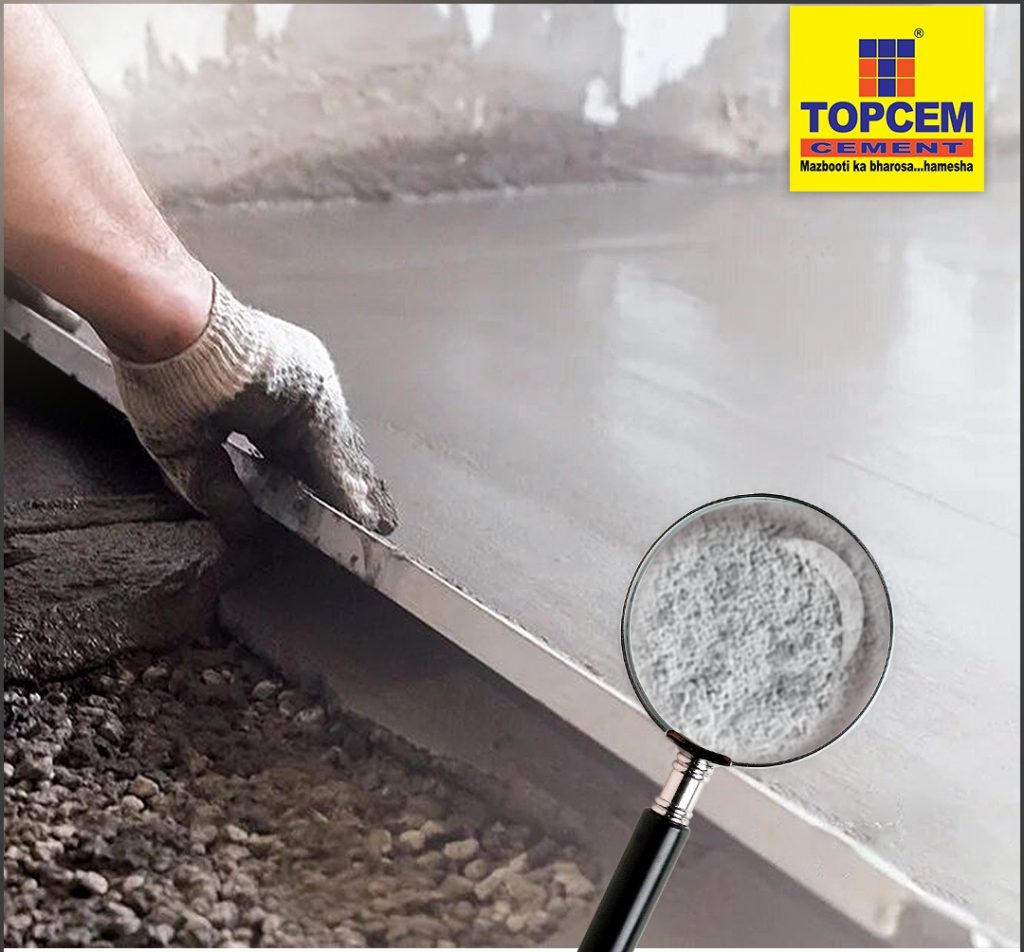Introduction
Cement, a fine, grey powder, is used to make mortar or concrete when combined with water and other ingredients. It is essential for both residential and business construction. Without cement, urban infrastructure would not be possible. Connecting the building bricks, secures infrastructure and makes them last longer. For concrete, there is a requirement that a certain ratio of cement, water, sand, and gravel be mixed, whereas mortar only utilizes cement, water, and lime aggregate.
Cement’s qualities are determined by heat, grinding, and composition. Read on to know more about the properties.
Physical Properties of Cement
Different cement mixture types used in construction can be distinguished by their physical qualities. Good cement has the following physical characteristics:
- Fineness of Cement: The cement’s fineness is determined by particle size. In the final stage of the manufacturing process, grinding the clinker produces the needed fineness of excellent cement. Since cement hydration rate is inversely related to cement particle size, fineness is an important factor.
- Soundness: The term “soundness” describes a cement’s capacity to withstand shrinking after hardening. Because of delayed expansion brought on by too much free lime and magnesium, high-quality cement maintains its volume after setting.
- Consistency: Consistency is the ability of cement paste to flow. It is determined using the Vicat Test where the Vicat Apparatus uses cement paste of standard consistency. The equipment’s plunger is lowered until it makes contact with the top of the cement. The plunger will pierce the cement to a specific depth depending on its consistency.
- Strength: Cement’s strength can be assessed using compressive, tensile, and flexural tests. A number of factors affect the strength, including the water-cement ratio, cement-fine aggregate ratio, curing conditions, specimen size and shape, molding and mixing, techniques, loading conditions, and age.
- Setting Time: When enough water is added to cement, it sets and becomes firm. The fineness of the cement, the cement-to-water ratio, the chemical content, and the presence of admixtures are some of the elements that affect how long it takes for cement to be set. Construction cement’s initial setting time should be as quick as possible, and its final setting time should be if possible. Two setting times are consequently noted: This is the initial setting when the paste starts to visibly harden. The cement will be able to sustain some weight once it has hardened.
- Heat of Hydration: Cement experiences hydration, a chemical process, when water is added. Heat is produced during hydration, and this heat can influence cement quality or help maintain a constant curing temperature during cold weather.
- Bulk Density: When water and cement are combined, the areas that would typically be filled with air are filled with liquid. Therefore, cement bulk density isn’t as significant as it formerly was. The percentage of cement in the mixture affects the cement’s density which can range from 28 to 35 kg per cubic foot.
Chemical Properties of Cement
In addition to the basic components of limestone (calcium), sand or clay (silicon), bauxite (aluminum), and iron ore, cement also contains various substances such shells, chalk, marl, shale, clay, blast furnace slag, and slate. Chemical examination of raw materials of cement reveals information about cement’s chemical properties that include:
- Tricalcium aluminate (C3A): Due to the low quantity of C3A in cement, it is resistant to sulfate. Gypsum slows down C3A’s hydration, which causes it to produce less heat during its earliest stages of hydration. In terms of strength, it offers only a modest amount of it.
- Tricalcium silicate (C3S): The cement’s early strength gain and initial setting are caused by C3S, which also accelerates hardening.
- Dicalcium silicate (C2S): Contrary to tricalcium silicate, which helps in early strength gain, dicalcium silicate in cement helps in strong growth after one week.
- Tetra Calcium Alumino Ferrite (C4AF): Tetra Calcium Alumino Ferrite is a fluxing agent. It lowers the kiln’s raw material melting temperature from 3,000°F to 2,600°F. Although it hydrates quickly, it does not significantly add to the cement’s strength.
- Magnesia (MgO): Magnesia is used as a basic material in dry process plants to create Portland cement. It can provide strength to cement when used sparingly, but too much can render it unsound and expanding. Cement made from MgO emits less CO2 during production. The maximum MgO level for any cement is 6%.
- Sulphur trioxide: A surplus of sulfur trioxide can render cement unstable.
- Iron oxide/ Ferric oxide: Iron oxide, also known as ferric oxide, is primarily responsible for the cement’s color, in addition to giving strength and hardness.
- Alkalis: It can be challenging to control the setting time of cement when it contains high levels of alkali. Concrete that contains calcium chloride and low alkali cement may discolor. Ground granulated blast furnace slag in slag-lime cement must be “activated” by the addition of alkalis in order to become hydraulic.
- Free lime: The occasional presence of free lime in cement may lead to expansion.
- Silica fumes: In order to enhance a number of qualities, particularly compressive strength, abrasion resistance, and bond strength, silica fume is added to cement concrete. The inclusion of silica fumes can provide unusually high strength, despite the fact that setting time is prolonged.
- Alumina: Due to the fact that alumina is chemically resistant, cement with a high alumina content may endure extremely cold temperatures. Additionally, it accelerates setting while weakening cement.
Mechanical Properties of Cement
The primary mechanical properties that determine the performance of concrete include:
- Compressive Strength: It describes the material’s capacity to withstand compression forces.
- Young’s Modulus (Elastic Modulus): It describes the cement’s capacity to withstand persistent deformation when pressure is applied.
- Tensile Strength: It describes the capacity to withstand breaking when exposed to tension forces.
- Poisson’s Ratio: It describes the relationship between a material’s response to an applied force in one direction (vertically) and a change in dimension in another direction (horizontal).
Conclusion
Different types of properties determine the quality of cement. Therefore, during the manufacturing process, these factors need to be kept in mind. Also, having a proper understanding of the characteristics of cement can help one choose the best option available in the market.
About Us
Topcem Cement, a product of Meghalaya Cements Ltd, is among the leading cement manufacturers in the entire NE India. Product quality, customer satisfaction, and timely delivery have been the cornerstone of Topcem’s brand identity. The company is currently dominating the Northeastern market and is dedicated to offering its customers a top-notch product, and experience. Topcem thrives to deliver innovative products through sustainable practices. It ensures that the esteemed clients of MCL get factory fresh, top-quality cement that offers unmatched strength and extraordinary durability.

